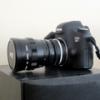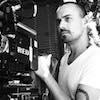Leaderboard
Popular Content
Showing content with the highest reputation on 12/09/2014 in all areas
-
I've been playing with the GH4 today in RAW stills burst mode. My workflow needs some refinement to get the motion blur looking more regular, but I actually quite like the filmic staccato of 12fps. The image quality is insanely nice though: Note: Plus members can download the original Prores LT file on Vimeo. I REALLY RECOMMEND DOING THIS - motion looks much worse when streamed. Vimeo blurb below: First test of using GH4 in RAW stills burst mode to make video. RAW stills converted to ProRes 444HQ and slowed to 50% in 24p FCPX timeline. Graded in FCPX and some grain applied. Also used REVisionEffects' RSMB to add motion blur as most of this was shot with a very high shutter speed. This has caused some unpleasant motion artefacts here and there. The final shot in the video (of blowing leaves and cars) used a 180 degree shutter in-camera (1/25s) and looks better I think. I will try using that setting for my next attempt. Rolling shutter looks quite severe. The GH4 buffer can only do about 40 frames in raw burst mode, so you can't really get longer than a 3 second clip. My card is a Sandisk 95MB/s U1 - I don't know if a faster card would do better. I actually really like the 12fps look, particularly when used with film grain and the really bold colours you can get from raw. I like the excessive motion blur. I think if you avoid severe camera movement so as not to draw attention to the rolling shutter and low frame rate, it can look very filmic. Obviously this can't be used for everything but with some refinement I think I will be using it a fair bit. If you like the 12fps look (12fps is right on the border of human perception of individual frames - I think this makes it rather interesting) and can live with the short burst times, there are a lot of good reasons to try this out. Yet another great thing about the awesome GH4. Check our blog for further testing of this mode: lintelfilms.co.uk/blog/ Note: I tried using 'optical flow' (FCPX's version of Twixtor) to create 'real' 24fps, but it was a mess, with lots of the usual warping around movement (even though I used a very fast shutter speed). Music by Chris Zabriskie.2 points
-
The FM lounge (Discussion of anything not related to FM price and discount)
Cosimo murgolo reacted to Liszon for a topic
Thanks for the offer Kristof, first I have to save up for the FM itself, haha.1 point -

The FM lounge (Discussion of anything not related to FM price and discount)
Liszon reacted to Kristoferman for a topic
I could potentially buy them for you and re-ship them if you'd like.1 point -

Isco 16:9 Video Attachment I - Questions and Answers.
Tito Ferradans reacted to ken for a topic
Usually, I use adhesive tape to cover the anamorphic lens rear edge first. So it is possible to let it touch the front glass of the taking lens without scratching the front glass. The glasses between two lenses would not touch, we can estimate that.1 point -

The FM lounge (Discussion of anything not related to FM price and discount)
Cosimo murgolo reacted to richg101 for a topic
Those damn ninja star aperture blades then the 85/2 is set to f2.8! Other than that, the results are really good and i like the glow. I have a feeling it might be from the cold - creating misting on one or more of the optics?1 point -
Nobody is going to see the prores file :p1 point
-
Best gh4 4k footage on the net.
Juan Le reacted to derekpanther for a topic
My favorite GH4-shot video ever:1 point -

Best 1080p/60fps image
Cinegain reacted to fuzzynormal for a topic
I've been very pleased with my gx7 @60p 1080. The camera is below $500 in the U.S. now so it's not much to give it a try. Impressive IQ as far as I'm concerned. It's nice and clean.1 point -
Correct...you could get a 105mm reversing ring to give a female thread up front to attach filters, but it does seem to make more sense to locate ND's in front of the taking lens. Thinking about it, if a Vari ND or CPL was upfront - the rotation when focusing would cause highlights and reflections to be altered by turning, so Vari ND location on taking lens is the only way it seems. (unless fixed inside a rail mounted mattebox using a filter tray adapter) I keep forgetting this darn lens rotates.1 point
-
Heliopan ND3.0 10-stop comes in 105mm, as does some B+W ND filters. Think the cheapest solution (if using cinelux) is to put a high quality vari ND on the taking lens, as that does not have to be mechanically attached to the rear of the FM lens. To make that attachment light tight - a cheap polarizing filter with the glass removed will give you a spinning filter frame to couple it to the VND and the 72mm rear ring adapter for cinelux. This will allow turn adjustment when everything is screwed together.1 point
-

Anamorphic on a Budget.
Tito Ferradans reacted to dahlfors for a topic
Tito: Since you've been away, check the anamorphic forum for the "FM Lens module" as well, I think you might find it interesting, especially on the subject of "anamorphic on a budget". Interesting to see your contributions here again :)1 point -
Here's a short vacation video I shot on my a6000. Lenses used were the Zeiss 24mm 1.8, Sony 50mm 1.8, and Sony 10-18mm F4. Coming from the NEX-6 I appreciated the a6000's autofocus speed and accuracy quite a bit. I also used the face detection focus tracking a couple times and it worked pretty well. Still wishing we could record in XAVC / slog2 though like the A7s.1 point
-
Have you considered making a Photography forum? I just read your interesting and creative article on low light A7S photography and went looking for a photo forum...1 point
-
With a background from stills, and not any real education in filmmaking - I found this a quick analysis of the Silence of the Lambs scene very interesting from a storytelling point of view. Maybe it is obvious for some of you, but I bet some others like me can learn a bit from this:1 point
-

Creative uses of long lenses?
IronFilm gave a reaction for a topic
Watch out Andy - you're sounding suspiciously like someone who should be using a full-frame camera!!! ;)1 point -

Beginner independent film maker. Need help and advice
IronFilm reacted to fuzzynormal for a topic
Make a silent film and tell a story where two characters are always in sillohette. Seriously. Make THAT happen. Forget the technical. It doesn't matter. Work the craft. Force yourself to consider silhouette and learn to look at light. Start with unusual, fun, circumstances and work backwards from there. Limitations are a weirdly ironic avenue for creativity. Obstructionism is a common exercise for artists.1 point -

AXIOM Beta: The first open digital cinema camera
IronFilm reacted to Cosimo murgolo for a topic
Checkt his out: https://www.indiegogo.com/projects/axiom-beta-the-first-open-digital-cinema-camera https://www.apertus.org/2014-NAB-Axiom-Beta1 point -

Panasonic GH4 user films, tests, reviews and opinions
dwijip reacted to diegocontreras for a topic
It's easy to work with but it definitely limits you. I haven't even tried it on other lenses because you have to change the adapter rings to match the lens size, and that process takes a few minutes. Makes you wish you could have an Anamorphot for each lens and just switch them out quickly. Then focusing is a bit tricky but that's the same on every anamorphic lens, and you'll always need diopters for closeup shots. So yeah, it would definitely be easier to just shoot with normal spherical lenses and use the black bars, but with anamorphic you get a different look. It's more than just the flares and bokeh, it's different framing. For me it adds scale to your backgrounds. Makes it feel like you're subject is surrounded by a huge world around them. It's more cinematic in many ways. But the 1.33x isn't that much of a change. I think the 1.5/2x anamorphics create a stronger effect.1 point -

Panasonic GH4 user films, tests, reviews and opinions
dwijip reacted to diegocontreras for a topic
Hey guys, Wanted to share a new GH4 test I shot with the SLR Magic Anamorphot + Sigma 30mm. The grade was extremely minimal and the colors you see are mostly coming from my custom CineV settings. Hope you guys like it.1 point -
The good thing about this camera is that it is flexible. You can mount native mft lenses on it or you can use a speed booster with other lenses to get a super 35 look. And if you want it to look softer there are ways to do it with filters or post production. Personally, I don't understand what all the fuss is. No one looks at an IMAX or RED film and goes "woah this is so sharp it looks like a video"1 point
-
Surprise! Sony Alpha A6000 video mode huge improvement
IronFilm reacted to Pascal Garnier for a topic
You can put EVERY lens ever made on a Sony A6000. I use M42, Canon FD and Canon EF lenses. But you can use Pentax, Nikon, Zeiss, Leica, ... on this camera with the right adapter.1 point -
Surprise! Sony Alpha A6000 video mode huge improvement
IronFilm reacted to pablogrollan for a topic
True, they even get to say that is not fit for pro use and disappointing for enthusiasts, but when it comes to video using autofocus is an oddity. Sure, the new autofocus systems for video will improve and become common use, but as of today I still have to witness a professional shooting environment where autofocus is even taken into consideration. Ondrej, if you plan to are going to be video-centered, the a6000 makes more sense in my opinion. It'll just take a little time getting used to the small form factor coming from a 7D, but functions such as zebras and focus peaking make up for it.1 point -
Surprise! Sony Alpha A6000 video mode huge improvement
IronFilm reacted to Pascal Garnier for a topic
The Canon 6D is pretty bad for video (great for stills), so the Sony A6000 would be a much better bet (especially with the Metabones). It's also smaller and will cost you less.1 point -

Pro Color Grade with Free Software
IronFilm reacted to ruanlotter for a topic
In this video I show you how to grade your videos professionally using FREE software (Davinci Resolve Lite)! Thanks for watching! www.facebook.com/tunnelviziontv www.twitter.com/ruanlotter1 point


